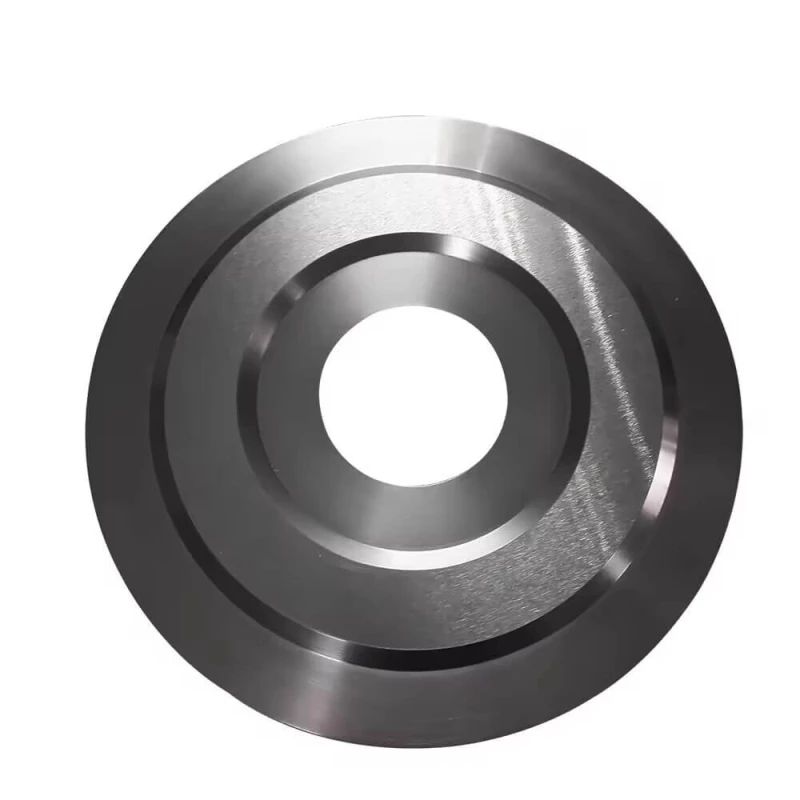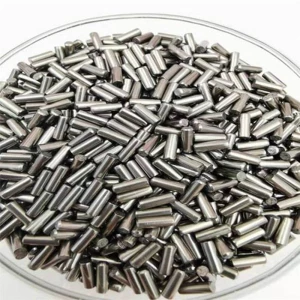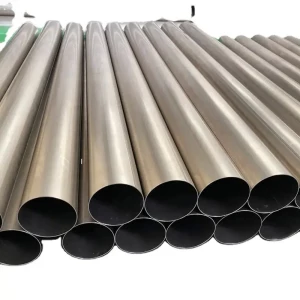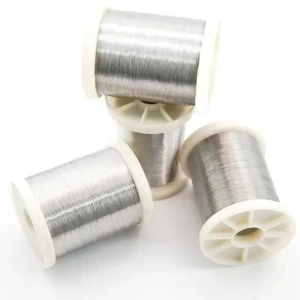Fasteners play an indispensable role in our daily lives and industrial production. From simple furniture assembly to complex aircraft manufacturing, a wide variety of fasteners are used. Among many fastening devices, molybdenum fasteners are gradually attracting people's attention due to their excellent performance and wide range of applications. Today, let us explore this mysterious molybdenum target together.
First, we need to understand what molybdenum is. Molybdenum, whose element symbol is Mo, is a silver-white metallic element and is a transition metal. Molybdenum is hard in texture, has strong wear resistance, and has good strength and hardness at high temperatures. Therefore, it is widely used in various high-strength, high-wear-resistant, and high-temperature-resistant environments.
The so-called molybdenum targets are various targets made of molybdenum as the main material, such as molybdenum targets, molybdenum sheets, etc. Due to the special properties of molybdenum, molybdenum targets have many advantages that other materials cannot match.
First, molybdenum targets have extremely strong high temperature resistance. It can still maintain good mechanical properties and hardness at temperatures up to 1500°C, which makes it widely used in aviation, aerospace, nuclear industry and other fields.
Second, molybdenum targets have excellent corrosion resistance. In a humid environment, many metals will be oxidized and corroded, but molybdenum can remain stable, which makes it important in chemical equipment, medical equipment and other fields.
Third, the wear resistance of molybdenum targets is also very outstanding. Whether it is sliding friction or rolling friction, molybdenum can maintain a low wear rate, so molybdenum targets are the first choice for equipment that requires high precision and long life.
However, although molybdenum targets have so many advantages, we also need to pay attention to some problems in actual use. For example, because molybdenum is difficult to process, making molybdenum targets requires specialized equipment and technology. At the same time, due to its relatively high price, economics should be fully considered when choosing to use it.
In addition, although molybdenum itself is harmless to the human body, at high temperatures it can react with oxygen in the air to form toxic oxides. Therefore, when using molybdenum targets, protective measures should be taken to avoid prolonged exposure to high temperatures.
In general, molybdenum targets are gradually becoming the new favorite in the industrial field due to their excellent performance and wide application prospects. Whether it is aerospace exploration in extreme environments or precision equipment in complex environments, molybdenum targets have demonstrated their unique value. We have reason to believe that with the development of science and technology, the application of molybdenum targets will be more extensive, and its scientific and technological charm will be more brilliant.
In what fields are molybdenum targets widely used?
Molybdenum targets, with their unique physical and chemical properties, especially outstanding performance in high temperature resistance, corrosion resistance and wear resistance, are widely used in many high-precision fields. The following are some of the main application areas of molybdenum targets:
1. Electronic industry: Because molybdenum has good conductivity and high temperature stability, it is often used as an electrode material in electronic devices, especially in the semiconductor industry, used to manufacture cathode components of electron guns and other key components.
2. Photovoltaic industry: In the field of solar photovoltaics, molybdenum targets can be used to manufacture the back contact layer of thin film solar cells to improve the power and stability of the cells.
3. Surface coating: Molybdenum targets are often used in coating processes, such as decorative coatings or surface hardening of tools and parts, to improve wear resistance and corrosion resistance.
4. Aerospace: In the aerospace industry, molybdenum is used in the manufacture of components for aircraft engines due to its high temperature resistance, including possible applications in gas turbine blades.
5. Nuclear industry: Because molybdenum has strong resistance to radiation damage from neutrons, it is used in structural materials for nuclear reactors, such as as control rod materials.
6. Medical devices: In the medical industry, molybdenum and its alloys may be used to manufacture surgical instruments and other equipment due to their biocompatibility.
7. High-temperature furnace manufacturing: In the manufacturing of high-temperature furnaces such as vacuum furnaces, glass melting furnaces and other equipment, molybdenum is used to manufacture heating elements and other key structural parts.
8. Electron beam and laser technology: In these technologies, molybdenum targets can be used as electrode materials for electron beam welding or laser welding.
9. Anti-corrosion field: The corrosion resistance of molybdenum makes it have special applications in certain chemical processes and equipment manufacturing in marine environments.
10. Steel industry: As an alloying element, molybdenum is added to steel to improve its strength and corrosion resistance, especially in the production of stainless steel.
These are some of the main application areas of molybdenum targets. With the advancement of technology and the development of new materials, the application scope of molybdenum targets may be further expanded.
Molybdenum targets have important applications in many fields due to their unique physical and chemical properties. Here are some key properties of molybdenum targets:
1. High melting point: Molybdenum has a very high melting point, approximately 2623°C (4809°F), which allows it to remain stable in high-temperature environments.
2. Good thermal conductivity: Molybdenum has a high thermal conductivity, which means that it can effectively conduct heat and is suitable for use as a heating element for high-temperature furnaces.
3. Low thermal expansion coefficient: Molybdenum has a low thermal expansion coefficient, which helps maintain dimensional stability when temperature changes and is suitable for applications with high precision requirements.
4. Excellent electrical conductivity: Molybdenum has good electrical conductivity, making it an ideal material for electrodes and other electronic components in the electronics industry.
5. Corrosion resistance: In many environments, especially non-oxidizing environments, molybdenum shows good corrosion resistance.
6. Wear resistance: Molybdenum has high hardness and good wear resistance, and performs well in applications with severe friction and wear.
7. Good creep resistance: Even at high temperatures, molybdenum can resist deformation and maintain its shape and strength.
8. Impact resistance: Molybdenum has certain resistance to impact loads and can be used under dynamic or impact conditions.
9. Biocompatibility: Molybdenum and its alloys are generally considered biocompatible and can be used in the medical field.
10. Neutron radiation stability: In high radiation environments such as nuclear reactors, molybdenum has a strong tolerance to neutron damage.
These characteristics make molybdenum targets widely used in electronics, photovoltaics, aerospace, medical equipment, steel alloys, chemical industry and other fields. It should be noted that although molybdenum has many excellent characteristics, in specific applications, its properties may need to be improved through alloying, coating or other treatments to adapt to more severe use conditions.
The molybdenum planar target is processed from our company's high-quality plates. It has the characteristics of high density, no internal cracks and blisters, bright surface, uniform color and accurate size.
Small molybdenum spinning targets are processed from high-quality rods and have the characteristics of accurate dimensions, smooth surface, and high purity.
Regular size molybdenum rotating targets are produced using the hot isostatic pressing process and feature high density (density up to 10.15 g/cm3), fine grains, and good molding.
Conventional density: 10g/cm³~10.15 g/cm³;
Special process density: greater than 10.15g/cm³.
Molybdenum targets can form thin films on various substrates and are widely used in electronic components and electronic products.
Performance of molybdenum sputtering target
Molybdenum sputtering targets perform identically to their source materials (pure molybdenum or molybdenum alloys). Molybdenum is a metal element mainly used in steel. After industrial molybdenum oxide is pressed, most of it is directly used in steelmaking or cast iron. A small amount of molybdenum is smelted into ferromolybdenum or molybdenum foil and then used in steelmaking. It can improve the strength, hardness, weldability and toughness of the alloy, as well as its resistance to high temperatures and corrosion.
Application of molybdenum sputtering targets in flat panel displays
In the electronics industry, the applications of molybdenum sputtering targets are mainly concentrated in flat-panel displays, thin-film solar cell electrodes and wiring materials, and semiconductor barrier materials. These materials are all based on molybdenum with high melting point, high conductivity, and low specific impedance. As the base material, it has good corrosion resistance and environmental protection performance. Molybdenum has the advantages of only half the specific impedance and film stress of chromium, and has no environmental pollution problems. It has become one of the preferred materials for sputtering targets for flat panel displays. In addition, adding molybdenum elements to LCD components can greatly improve the brightness, contrast, color and life of the LCD.
Application of molybdenum sputtering target in thin film solar photovoltaic cells
CIGS is an important type of solar cell used to convert sunlight into electricity. CIGS is composed of four elements: copper (Cu), indium (In), gallium (Ga) and selenium (Se). Its full name is copper indium gallium selenide thin film solar cell. CIGS has the advantages of strong light absorption capacity, good power generation stability, high conversion efficiency, long power generation time during the day, large power generation, low production cost, and short energy recovery period.
Molybdenum targets are mainly used to form the electrode layer of CIGS thin film batteries through sputtering. Molybdenum is located at the bottom of the solar cell. As the back contact of the solar cell, it plays an important role in the nucleation, growth and morphology of CIGS thin film crystals.
Molybdenum sputtering target for touch screen
Molybdenum niobium (MoNb) targets are used for conductive layers, cover layers and barrier layers in HDTVs, tablets, smartphones and other mobile devices via sputter coating.
Abbiamo più categorie per te. Se non riesci a trovare i prodotti che desideri sopra, compila il modulo e dicci quali prodotti desideri importare dalla Cina.






















